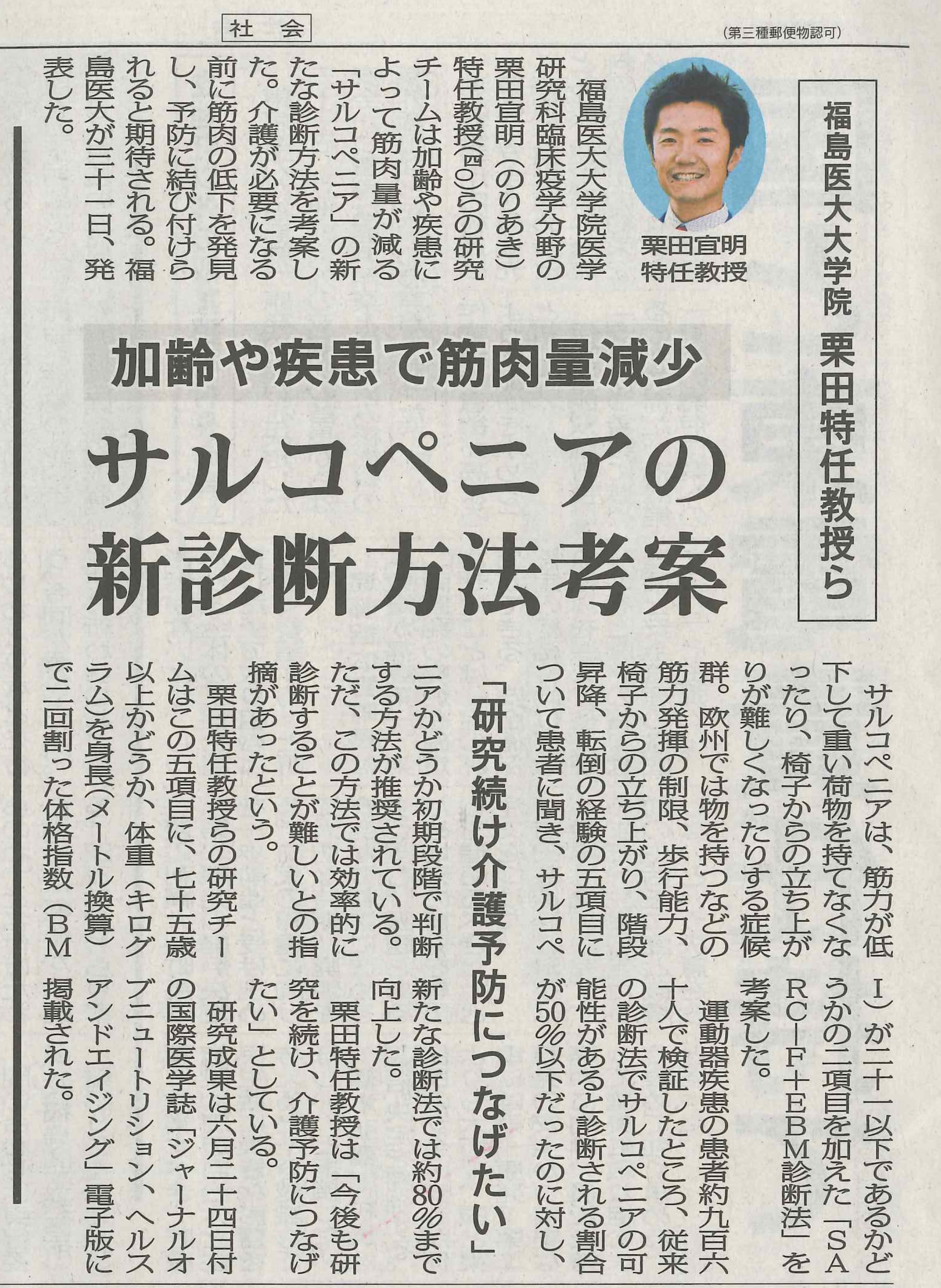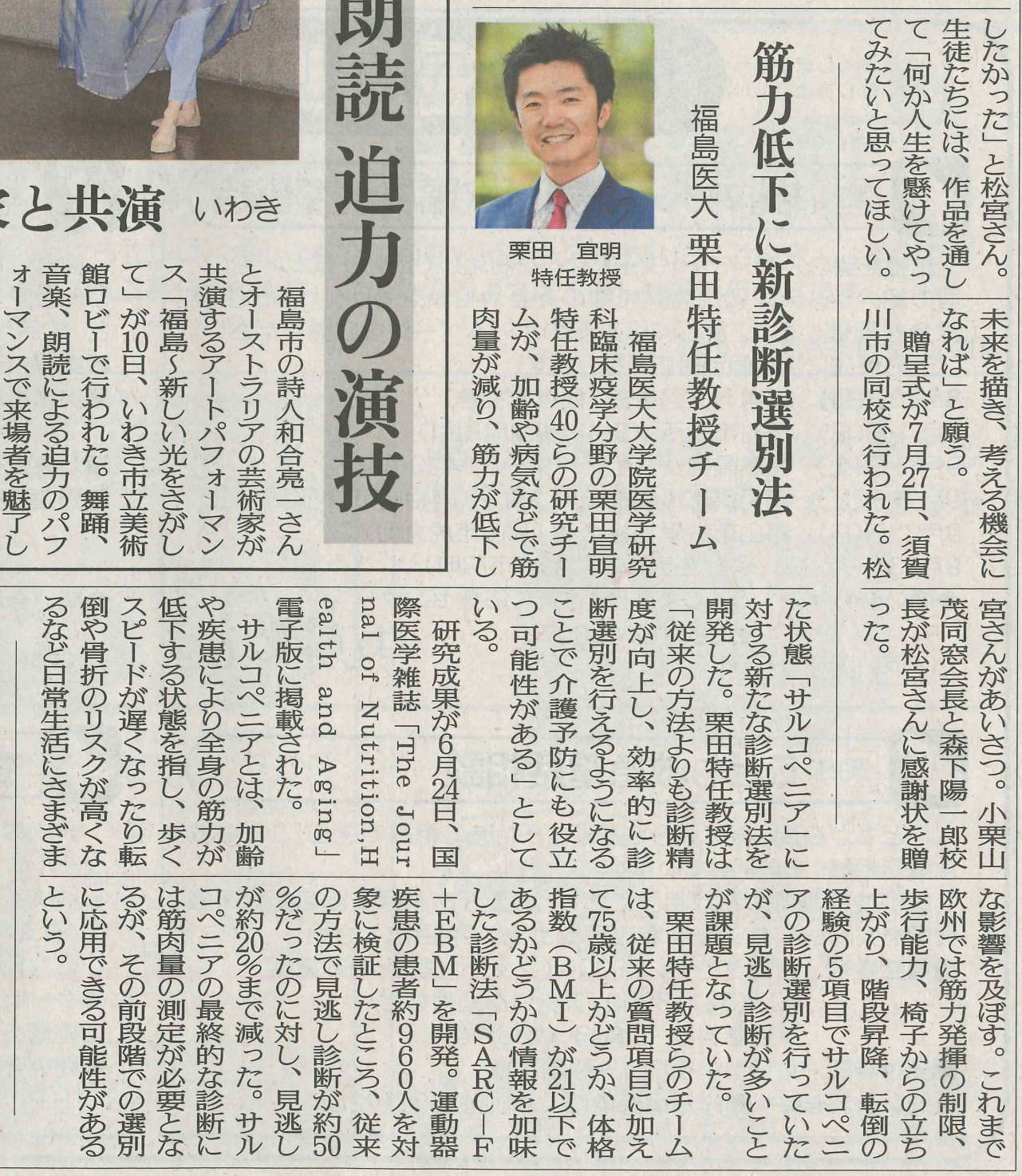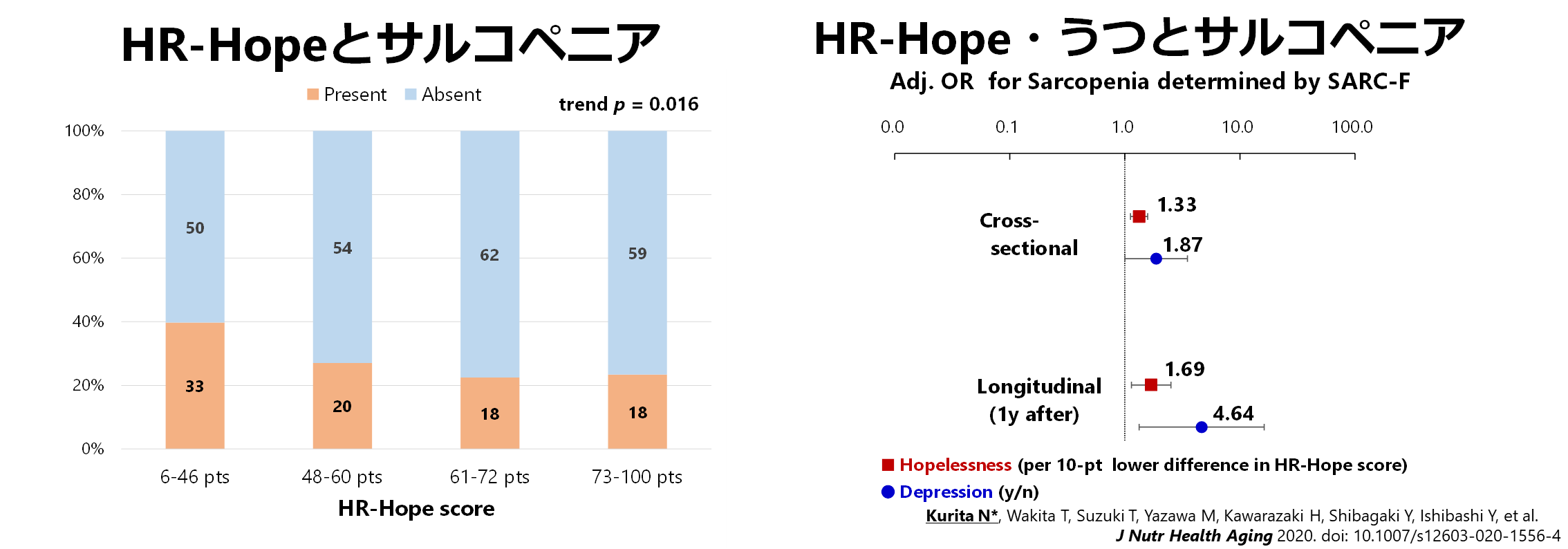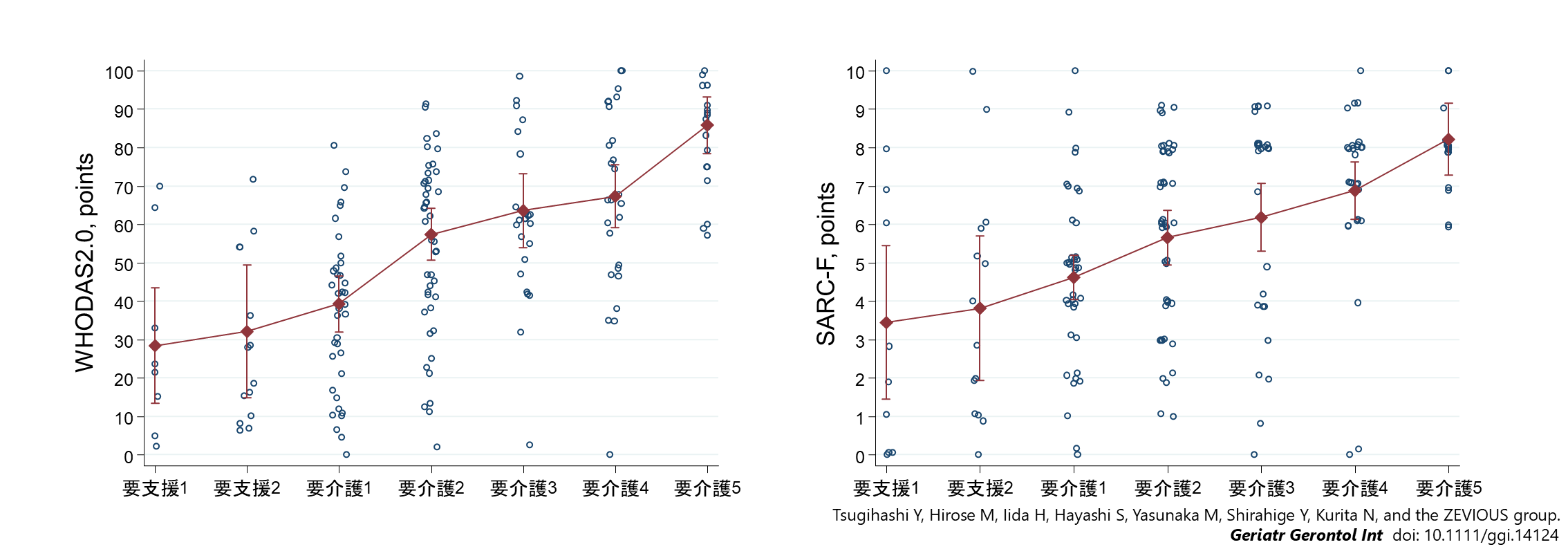Overview
Sarcopenia syndrome, a condition in which muscle mass and strength are lost due to aging or disease, is gaining attention. In order to diagnose sarcopenia, an assessment of muscle mass is necessary. To measure muscle mass, it is recommended to use a multi-frequency body composition meter, X-ray bone densitometry device, and CT to measure muscle cross-sectional area. However, in settings with screening for sarcopenia or conducting clinical epidemiological studies, these instruments may not always be available.
The SARC-F questionnaire, which consists of five questions, is used abroad for screening sarcopenia. A Japanese academic society started to recommend the use of the SARC-F questionnaire from November 2019 (Source: Japanese Association on Sarcopenia and Frailty). Dr. Kurita, Tsukasa Kamitani (Kyoto University), and Prof. Takafumi Wakita (Kansai University) produced the Japanese version of SARC-F through the formal translation and back translation procedures. One of the original authors, Professor John Morley (St. Louis University), also confirmed the semantic content of the reverse translation and gave us permission to use the Japanese version (November 30, 2017).
Other researchers have also published the Japanese version of SARC-F, but the Japanese version of SARC-F introduced in this page is the one that follows the process required for making a Japanese translation. Therefore, you can use and cite it with confidence when you aim to conduct sarcopenia research in Japan and disseminate its results to the world. If you are considering using it, please see the information in the body and supplement of the paper.
- There is a five-item questions statement.
- For each question, they are asked to choose one of the three response sentences.
- A score ranging from 0 to 2 points will be given for each answer you choose. The highest score will be 10 points.
- A score of 4 or more is defined as a cutoff (i.e., a positive screening).
※The Japanese version of SARC-F and the title of our research article were featured in the “Key Points for Prevention of Inactivity Related Diseases” on the website of Tsuchiura City, Ibaraki Prefecture.
They were used as part of the “Health Promotion Against Infectious Diseases – Awareness Check Sheet”.
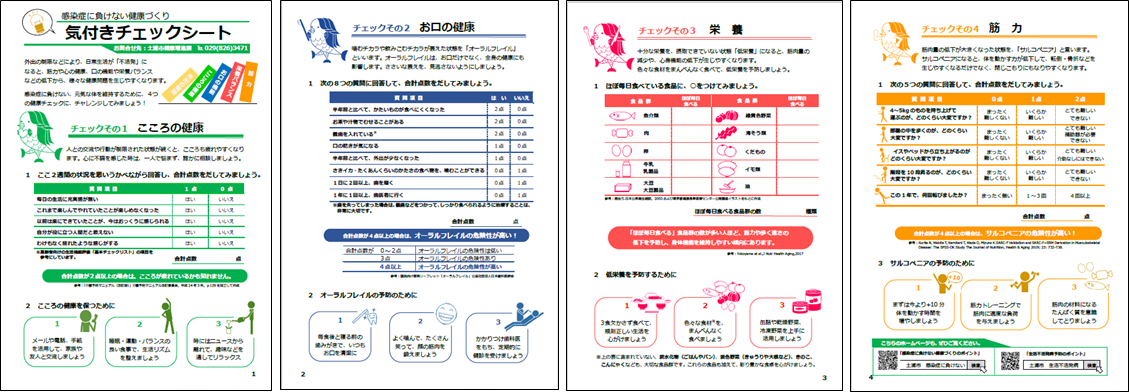
Requests for citations
Please cite the following papers when you present your research using the Japanese version of SARC-F questionnaire introduced in this page at an academic conference, in a paper, or in a book. If you have any questions, please contact us by e-mail.
サルコペニアのスクリーニングで用いられるSARC-F質問票の診断精度を、運動器疾患およそ960人で検証しました。さらに、"EBM"(EldelyとBMI)の追加による診断精度の改善を調べました。感度・特異度は、SARC-F単独では不良でしたが、SARC-F+EBMでは約80%・70%でした。SARC-F単独に比べて、SARC-F+EBMの感度やAUCが優れました。この簡便な"SARC-F+EBM"がスクリーニングに応用できる可能性を示しました。科学研究費補助金の助成を受けて実施した研究です。[free-fulltext (全文読めます)][※研究成果が、福島民報 日刊に掲載されました。加齢や疾患で筋肉量減少 サルコペニアの新診断方法考案. 福島民報. 2019年8月1日 日刊29ページ. また、福島民友に掲載されました。筋力低下に新診断選別法 福島医大 栗田特任教授チーム. 福島民友. 2019年8月11日 日刊4ページ.]
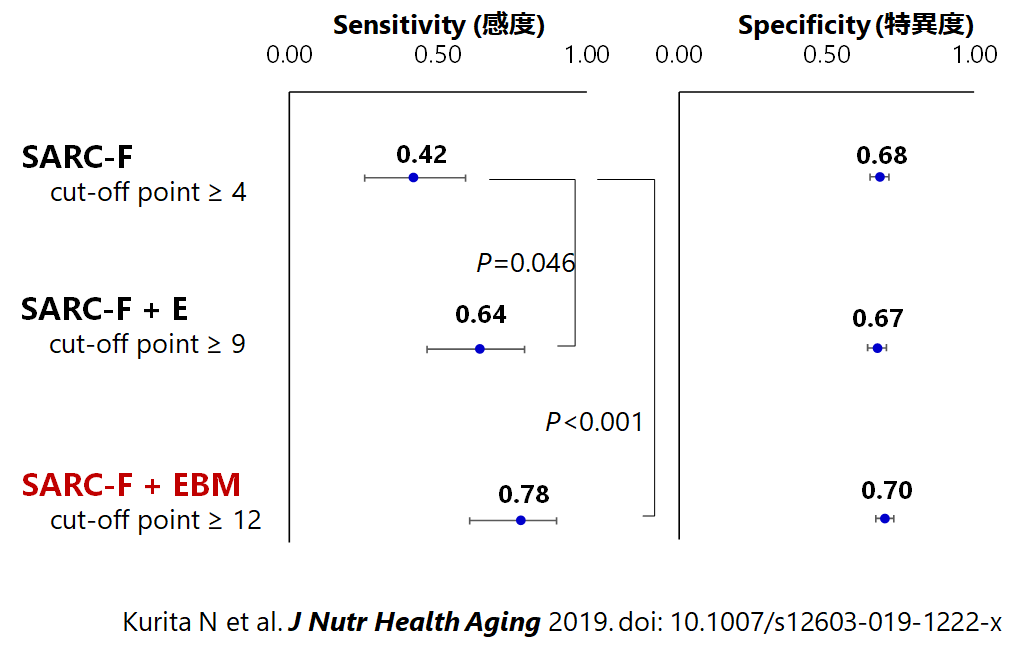
※Our clinical research articles using the Japanese version of SARC-F as the primary endpoint (a.k.a. outcome) have been published from The Journal of Nutrition, Health & Aging and Geriatrics & Gerontology International.
私たちは、成人の慢性腎臓病(CKD)患者において、健康関連ホープ尺度(HR-Hope)/うつとサルコペニアの関係性を長期的に分析しました。その結果、HR-Hopeスコアが低いほど、サルコペニアになる可能性が示されました。さらに、抑うつを抱えることも、独立した要因としてサルコペニアを引き起こす可能性があることがわかりました。この研究は、ヨーロッパ臨床栄養・代謝学会(ESPEN)とヨーロッパ腎臓学会・ヨーロッパ腎栄養グループ(ERN-ERA)によってまとめられた、高齢のCKD患者向けのタンパク質・エネルギー摂取量の指針とするためのレビュー論文(Piccoli GB et al. Clinical Nutrition 2023)に引用されました。
この研究は、科学研究費補助金の助成を受けて実施されたものです(基盤研究(B) 課題番号16H05216, 研究代表者:柴垣有吾, 研究分担者:福原 脇田 栗田; 若手研究 課題番号18K17970)。
東京・奈良・長崎で在宅医療を受ける患者の要介護度と自己報告による生活機能・身体機能との関係性を横断的に分析しました。生活機能は国際生活機能分類(ICF)を反映するWHODAS2.0で、身体機能はサルコペニアのスクリーニングで用いられるSARC-Fで評価しました。要介護度が高くなるほど、自己報告に基づく生活機能や身体機能のレベルが低下することを示しました。
長崎在宅Dr.ネット・医療法人社団鉄祐会・天理よろづ相談所白川分院と奈良県内でご活躍の先生方とチームで行う、ZEVIOUS研究(Zaitaku Evaluative Initiatives and Outcome Study)の成果(チームプロダクト)です。
